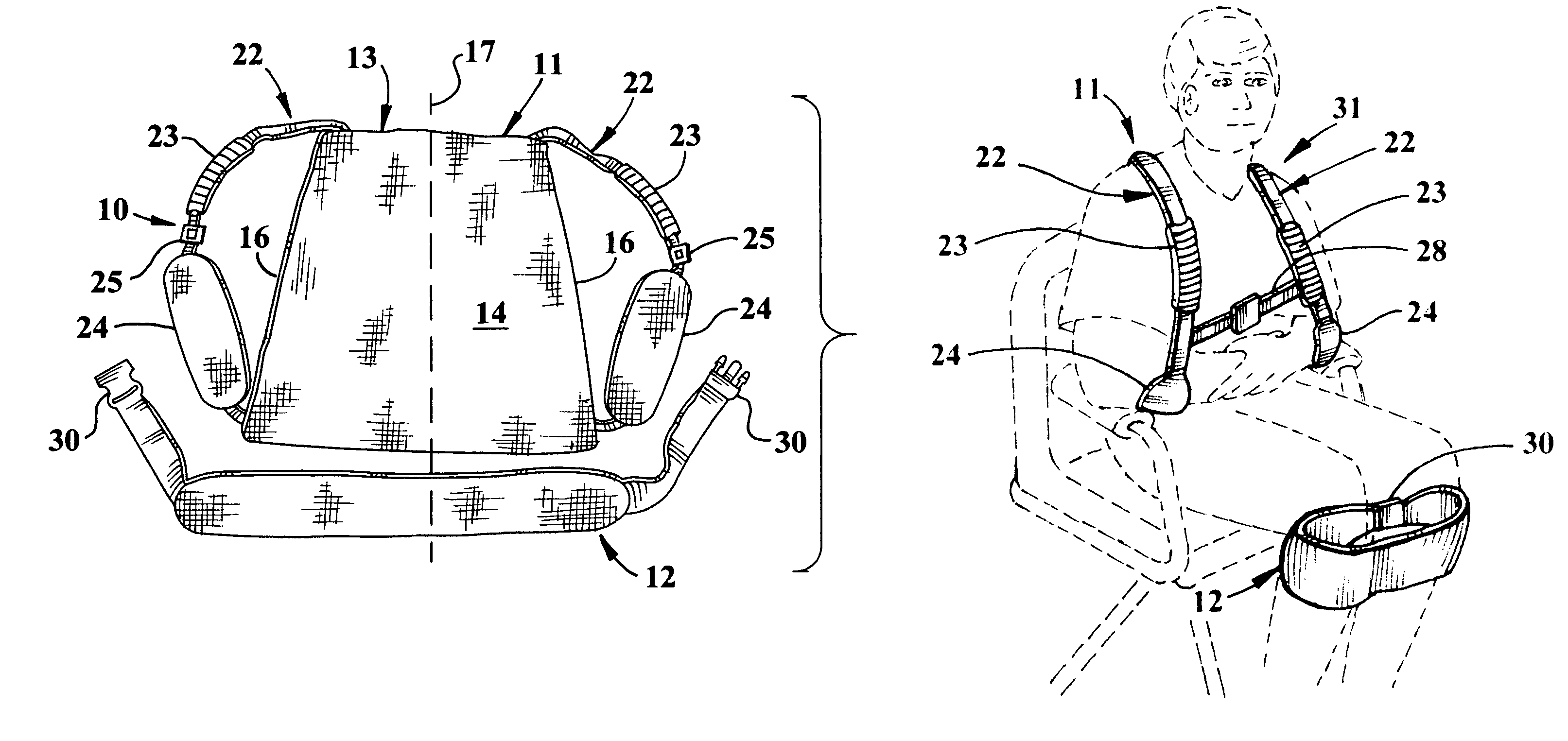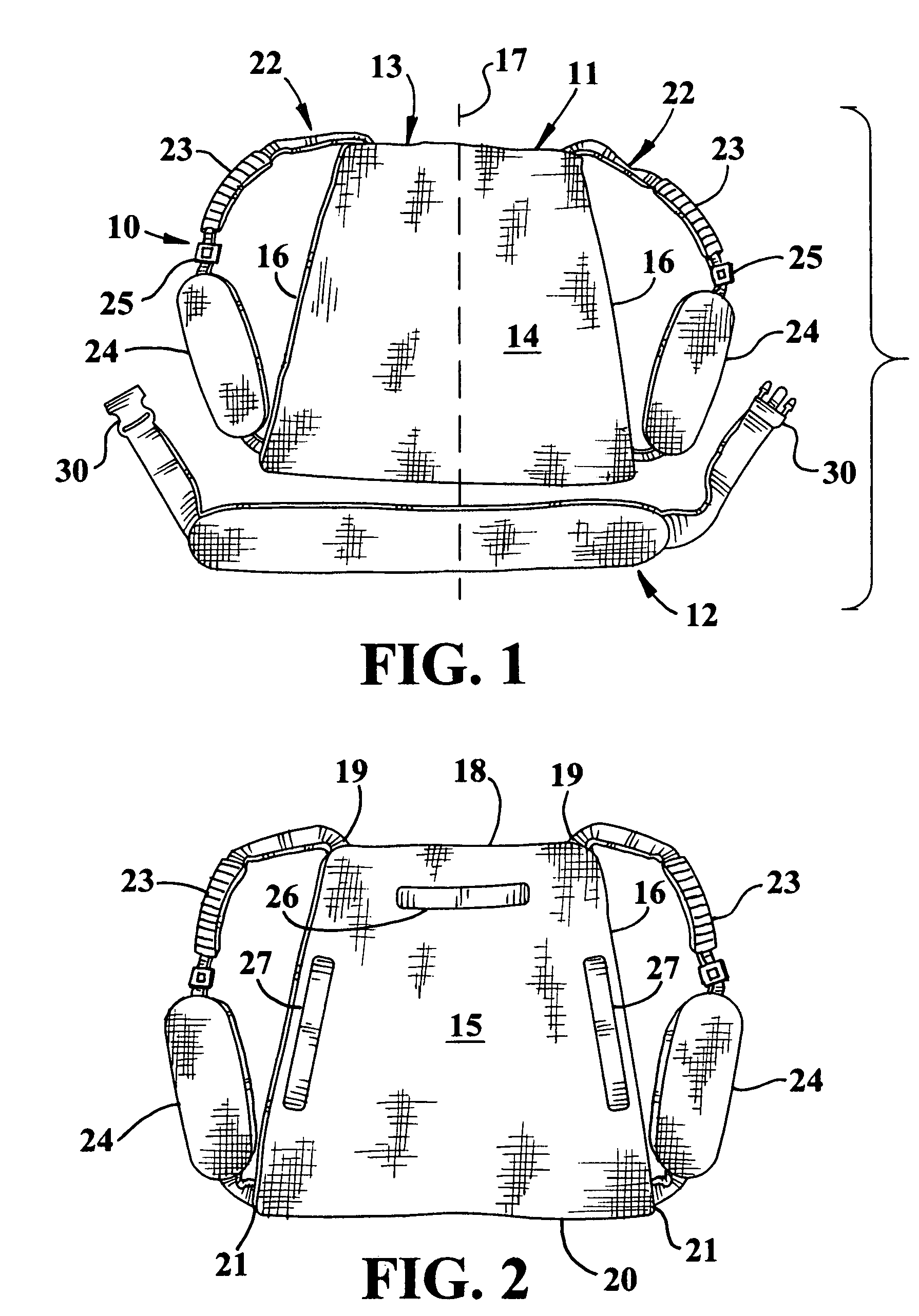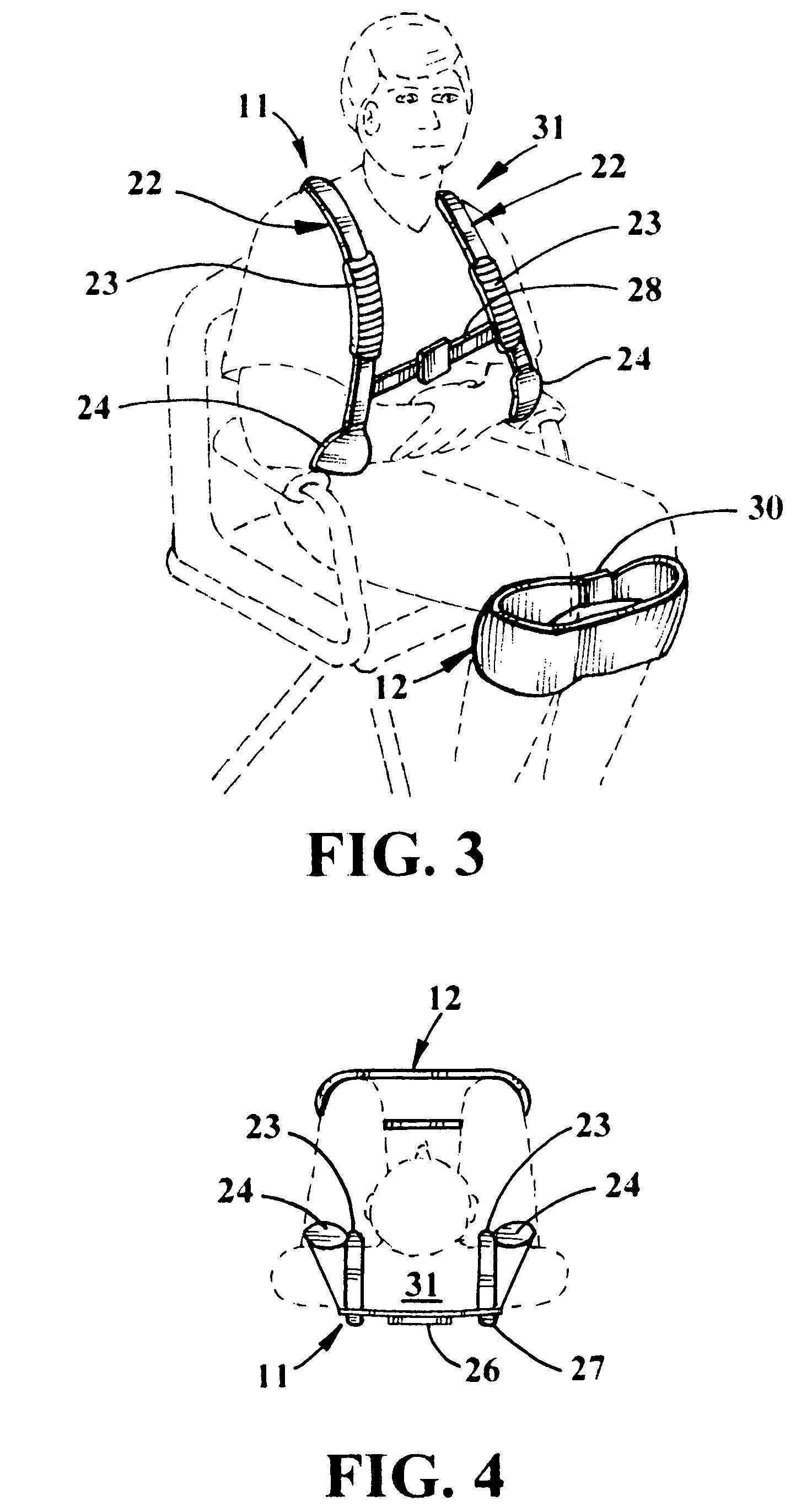Portable patient transfer system
a patient transfer and portable technology, applied in the field of incapacitated person handling, can solve the problems of inability to assist in the rescue of persons, large equipment, heavy equipment, etc., and achieve the effect of minimizing any slippage of the vest and improving the efficiency of lifting
- Summary
- Abstract
- Description
- Claims
- Application Information
AI Technical Summary
Benefits of technology
Problems solved by technology
Method used
Image
Examples
Embodiment Construction
[0028]Referring now to FIGS. 1-7, an embodiment of the portable patient transfer system 10 of the present invention is shown comprised of vest component 11 and separate leg belt component 12.
[0029]Vest component 11 is comprised of a rear panel 13 fabricated of compliant strong material such as a heavy duty fabric tightly woven from high strength synthetic continuous filament yarns such as polypropylene, nylon and polyester. Panel 13 is bounded by front and rear surfaces 14 and 15, respectively, and has a substantially trapezoidal perimeter defined by two laterally opposed edges 16 upwardly convergent about a vertical center of symmetry 17, an upper horizontal edge 18 which meets with said laterally opposed edges to form upper corners 19, and a lower horizontal edge 20 of greater length than said upper edge, and meeting with said laterally opposed edges to form lower corners 21.
[0030]Shoulder strap means 22 are upwardly emergent from each upper corner 19, and downwardly descendent fo...
PUM
 Login to View More
Login to View More Abstract
Description
Claims
Application Information
 Login to View More
Login to View More - R&D
- Intellectual Property
- Life Sciences
- Materials
- Tech Scout
- Unparalleled Data Quality
- Higher Quality Content
- 60% Fewer Hallucinations
Browse by: Latest US Patents, China's latest patents, Technical Efficacy Thesaurus, Application Domain, Technology Topic, Popular Technical Reports.
© 2025 PatSnap. All rights reserved.Legal|Privacy policy|Modern Slavery Act Transparency Statement|Sitemap|About US| Contact US: help@patsnap.com



